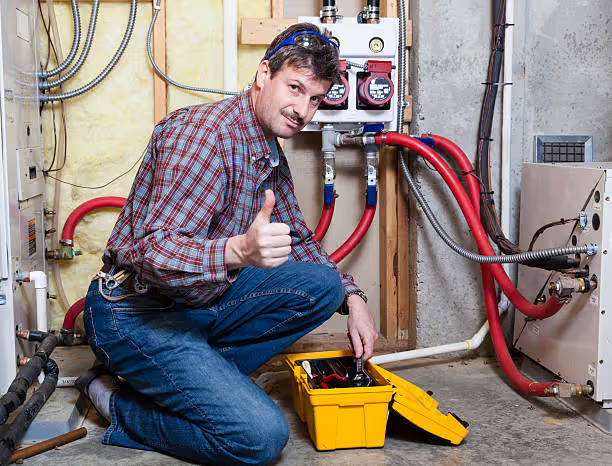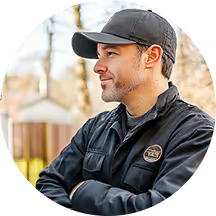Furnace Installation in Babylon, NY
Installing a new furnace is one of the most important investments you can make for year‑round comfort, safety, and energy savings in Babylon, NY. Whether you live in a waterfront cottage near the Great South Bay or an older Colonial inland, a properly specified and professionally installed furnace improves warmth consistency, indoor air quality, and operating cost. Below is a clear, decision‑stage guide to the furnace installation process tailored to Babylon homes, covering site assessment, equipment selection, ductwork, code and permit considerations, commissioning and safety checks, warranties, and long‑term performance tips.

Why a proper furnace installation matters in Babylon, NY
Babylon’s coastal Long Island climate brings cold, damp winters and salty air that can accelerate corrosion on outdoor and venting components. Many local homes were built decades ago and may have undersized ducts, aging oil or natural gas systems, or inadequate combustion air intake. A correct installation:
- Ensures efficient heat delivery and lower utility bills
- Reduces risk of carbon monoxide and combustion issues
- Extends equipment life in a humid, coastal environment
- Meets local and state building codes so your home stays compliant
Common furnace types and efficiency ratings
When choosing a new system, understanding fuel type and efficiency is key.
- Gas furnaces — Most common in Babylon; look at AFUE (Annual Fuel Utilization Efficiency). Non‑condensing models are typically ~80% AFUE; condensing high‑efficiency models reach 90–98% AFUE.
- Oil furnaces — Found in some older Long Island homes; modern oil systems are more efficient but require regular service and oil tank inspections.
- Electric furnaces and heat pumps — Heat pumps (air‑source or hybrid systems) are increasingly popular, especially with available state and federal incentives for electrification.
- Brand options — Reliable choices compatible with local service networks include Rheem, Bosch, Daikin, Goodman, Amana and others. Select brands with local parts availability and proven corrosion resistance for coastal conditions.
Site assessment: what to expect
A thorough site assessment identifies the right size and placement for your new furnace.
- Load calculation (Manual J) — A certified technician calculates heating needs based on home size, insulation levels, window types, and local climate to avoid oversized or undersized systems.
- Duct evaluation (Manual D basics) — Inspect duct size, leakage, insulation, and airflow balance. Many Babylon homes need sealing or resizing to get full performance from a new furnace.
- Fuel and venting check — Confirm existing gas line capacity or oil tank condition and evaluate flue or vent routing. Coastal homes may require corrosion‑resistant venting materials.
- Combustion air and clearance — Determine proper combustion air sources and clearance for safe operation, particularly in tight utility rooms or basements.
Ductwork inspection and recommended upgrades
Duct condition directly affects comfort and efficiency. Typical findings and solutions:
- Leaky ducts — Seal with mastic or foil tape and test after sealing.
- Undersized runs — Reconfigure or add trunks/boots to improve airflow.
- Dirty or uninsulated ducts — Clean and insulate to reduce heat loss, especially in unconditioned crawlspaces.
- Zoning and dampers — Add zoning for multi‑level homes to reduce temperature swings and improve efficiency.
Professional installation steps
A professional, code‑compliant installation follows a predictable sequence:
- Pre‑installation preparation — Finalize equipment selection and confirm fuel/venting compatibility.
- Removal of old equipment — Safe disconnect and disposal, including oil tank management if applicable.
- Mounting and connection — Install furnace, connect gas or electric service, condensate drain (for condensing units), and flue or vent system.
- Duct and thermostat integration — Connect supply and return ducts, install or reprogram thermostat (including smart or programmable models).
- Inspections and permits — Coordinate required permits and on‑site inspections with local building authorities to ensure compliance with New York State and Suffolk County codes.
- System startup and balancing — Power up system, check combustion and draft, and balance airflow across registers.
Permit, code compliance, and safety checks
Proper permitting and safety verification protect your family and your investment.
- Permits — Installations typically require permits and final inspection by local building officials. Work performed without permits can cause resale and insurance complications.
- Combustion safety tests — Technicians perform carbon monoxide and combustion efficiency tests, check for proper flue draft, and verify gas/leak tightness.
- Electrical and gas code compliance — Ensures wiring, shutoffs, and gas piping meet code and manufacturer specs.
- CO alarms and vent termination — Confirm placement of CO detectors and that vent terminations are positioned away from windows and intake locations—especially important near coastal breezeways.
Commissioning and performance verification
Commissioning is more than turning the system on. Expect:
- Thermostat calibration and control setup — Confirm setpoints, schedules, and compatibility with zoning or smart thermostats.
- Airflow measurement and distribution — Verify CFM at key vents and make adjustments for even heating.
- Combustion analysis — Measure CO, CO2, and efficiency to ensure safe, optimal operation.
- Documentation — Equipment manuals, warranty registration instructions, and a maintenance checklist should be provided.
Warranties and registration
Understand the difference between types of protection:
- Manufacturer warranty — Covers parts for a set number of years (commonly 10 or more on major components for premium models). Registration may be required to activate full coverage.
- Labor warranty — Some installers offer a limited labor warranty for installation work. Get terms in writing.
- Extended coverage options — Consider extended parts or service plans for peace of mind, particularly for coastal homes where corrosion can be a factor.
Tips to ensure long‑term performance in Babylon homes
Maintain efficiency and extend equipment life with these best practices:
- Replace filters regularly with the appropriate MERV rating for your system and indoor air quality needs.
- Schedule annual heating tune‑ups before the cold months to check combustion, seals, and controls.
- Seal and insulate ducts in unconditioned spaces to prevent heat loss and moisture issues.
- Use a programmable or smart thermostat to reduce runtime while maintaining comfort.
- Protect outdoor components from salt spray and direct exposure; choose stainless or coated materials where applicable.
- Keep combustion areas clear and ensure CO detectors are installed and tested regularly.
Choosing and installing a furnace in Babylon, NY requires attention to local climate effects, proper sizing, ductwork condition, and strict adherence to safety and permit requirements. A well‑executed installation delivers quieter operation, better comfort, and measurable energy savings while reducing safety risks associated with combustion heating systems.
Customer Testimonials
Hear directly from homeowners who trust Bobby O’s HVAC Inc. for fast response times, honest service, and lasting comfort.











